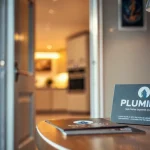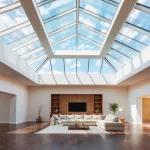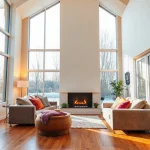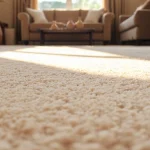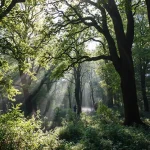Ultimate Guide to Selecting the Ideal Exterior Paint for Lancashire’s Wet Weather
When it comes to painting the exterior of your house in Lancashire, you’re faced with a unique set of challenges due to the region’s notoriously wet and unpredictable weather. Choosing the right exterior paint is crucial to ensure your home remains protected, looks great, and withstands the elements. Here’s a comprehensive guide to help you make the best decision.
Understanding the Weather Challenges in Lancashire
Lancashire is known for its rainy climate, which can be quite harsh on exterior surfaces. The constant moisture can lead to issues such as damp, mould, and mildew, all of which can compromise the integrity and appearance of your home’s exterior.
Also read : Top strategies for achieving a brilliant shine on stone floors
"Lancashire's wet weather demands paints that are not just aesthetically pleasing but also highly durable and water-resistant," says a local painter.
Key Features to Look for in Exterior Paints
When selecting an exterior paint, there are several key features you need to consider to ensure the paint can withstand Lancashire’s wet weather.
Water Resistance and Durability
The paint should be able to resist water and moisture effectively. Look for paints with a high level of water resistance and a durable finish that won’t peel or fade quickly.
Also to see : Top-rated plumbing services in reigate for quick assistance
"A good exterior paint should be able to handle the rain and dampness without compromising its finish," advises a painting expert.
Quick Drying Time
A quick drying time is essential to prevent the paint from being washed away by rain before it has a chance to set. Paints like Johnstone’s Quick Dry Satin and Leyland Trade – Wood & Metal – Fast Drying Plus are excellent choices due to their fast drying times of 1-2 hours and 3-4 hours, respectively[1].
Low Odour and Easy Clean-Up
For indoor comfort and ease of use, opt for water-based paints with low odour. These paints are easier to clean up with water and do not require harsh chemicals like white spirit.
Non-Yellowing Finish
Oil-based paints often yellow over time, especially when exposed to sunlight. Water-based paints like Johnstone’s Quick Dry Satin offer a non-yellowing finish, maintaining their colour and appearance longer[1].
Types of Exterior Paints Suitable for Lancashire
Water-Based Paints
Water-based paints are generally preferred for exterior use in wet climates due to their ease of application, low odour, and quick drying times.
- Johnstone’s Quick Dry Satin: This paint is highly recommended for its quick drying time, non-yellowing finish, and high coverage. It is suitable for both wood and metal surfaces[1].
- Leyland Trade – Wood & Metal – Fast Drying Plus: This paint offers a hard-wearing, durable finish and is known for its smooth application and low VOC formula[1].
Gloss and Satin Finishes
The choice between gloss and satin finishes depends on your preference and the surface you are painting.
- Leyland Trade Non-Drip Gloss Paint: Ideal for achieving a professional, high-gloss finish. It is drip-resistant and self-undercoating, making it a great option for woodwork and metal surfaces[1].
- Johnstone’s Quick Dry Satin: Provides a mid-sheen satin finish that is less reflective than gloss but still offers a clean, bright look[1].
Preparing Your Surface for Painting
Before you start painting, it’s crucial to prepare your surface properly to ensure the best results.
Cleaning the Surface
Make sure the surface is clean and free from dirt, grime, and any existing paint that may be flaking off. For walls with render, ensure the render is in good condition and any cracks are patched up[3].
Sanding and Priming
Lightly sand the surface to create a smooth finish. While some paints like Leyland Trade Non-Drip Gloss Paint are self-undercoating, others may require a separate primer to ensure better adhesion and coverage[1].
Additional Considerations: Render, Cladding, and Wall Insulation
Render
Render is a critical barrier against dampness and weather elements. Ensuring your render is in good condition or applying a new render can significantly protect your home.
- Cost of Rendering: The average cost to render a house in the UK is around £5,000, and it typically takes a professional about a week to complete[3].
- Types of Render: Different types of render, such as pebbledash, roughcast, and polymer render, offer various finishes and insulation properties. The choice depends on your desired finish and the weather conditions in your area[3].
Cladding
Cladding can provide an additional layer of protection against the elements and can be painted to match your home’s exterior.
- UPVC Cladding: UPVC cladding is a popular choice due to its durability and low maintenance. It can be painted with specialized UPVC paints to enhance its appearance[4].
Wall Insulation
Proper wall insulation can help reduce damp issues and improve energy efficiency.
- Damp-Proofing: If you have issues with rising damp, consider damp-proofing your home. This can involve injecting a new DPC or applying damp-resistant paints to the exterior walls[2].
Practical Tips for Painting in Wet Weather
Choosing the Right Time
Avoid painting during wet or cold conditions. The ideal temperature for painting is between 10°C and 30°C[5].
Using the Right Tools
Use high-quality brushes or rollers to ensure smooth application and even coverage.
Applying Multiple Coats
Depending on the paint and surface, you may need to apply multiple coats. Ensure each coat is fully dry before applying the next one.
Comparative Table: Best Exterior Paints for Lancashire
| Paint Type | Drying Time | Finish | Water Resistance | Low Odour | Self-Undercoating |
|---|---|---|---|---|---|
| Johnstone’s Quick Dry Satin | 1-2 hours | Satin | High | Yes | No |
| Leyland Trade Non-Drip Gloss | 3-4 hours | Gloss | High | Yes | Yes |
| Leyland Trade – Wood & Metal – Fast Drying Plus | 3-4 hours | Satin | High | Yes | No |
Detailed Bullet Point List: Key Considerations for Exterior Painting
-
Surface Preparation:
-
Clean the surface thoroughly.
-
Lightly sand the surface for better adhesion.
-
Apply primer if necessary.
-
Weather Conditions:
-
Avoid painting in wet or cold conditions.
-
Paint when the temperature is between 10°C and 30°C.
-
Paint Selection:
-
Choose water-based paints for ease of use and low odour.
-
Select paints with quick drying times to avoid wash-off.
-
Opt for paints with non-yellowing finishes.
-
Additional Protection:
-
Ensure render is in good condition or apply new render.
-
Consider cladding for extra protection.
-
Check and improve wall insulation to reduce damp issues.
-
Application Tips:
-
Use high-quality brushes or rollers.
-
Apply multiple coats if necessary, ensuring each coat is fully dry.
-
Avoid overworking the paint to prevent brush marks.
Real-Life Example: Painting an Exterior House in Lancashire
Imagine you are painting the exterior of your house in Lancashire. Here’s how you might approach it:
- Assess the Weather: Check the forecast to ensure you have a few dry days ahead.
- Prepare the Surface: Clean the walls thoroughly and patch any cracks in the render. Lightly sand the surface to ensure smooth paint adhesion.
- Choose the Right Paint: Select a water-based paint like Johnstone’s Quick Dry Satin or Leyland Trade – Wood & Metal – Fast Drying Plus, considering their quick drying times and durable finishes.
- Apply the Paint: Use a high-quality brush or roller to apply the paint, ensuring even coverage. Apply multiple coats if necessary, allowing each coat to dry fully before the next.
- Inspect and Touch Up: Once the painting is complete, inspect the surface for any imperfections and touch up as needed.
Selecting the ideal exterior paint for Lancashire’s wet weather involves careful consideration of several factors, including water resistance, durability, and quick drying times. By understanding the unique challenges posed by the local climate and following practical tips for preparation and application, you can ensure your home’s exterior remains protected and looks great for years to come.
"The right paint can make all the difference in how your home withstands the elements and maintains its appearance," says a local homeowner who recently painted their exterior.
With the right paint and proper preparation, you can enjoy a beautifully painted and well-protected home, even in Lancashire’s wet and unpredictable weather.

